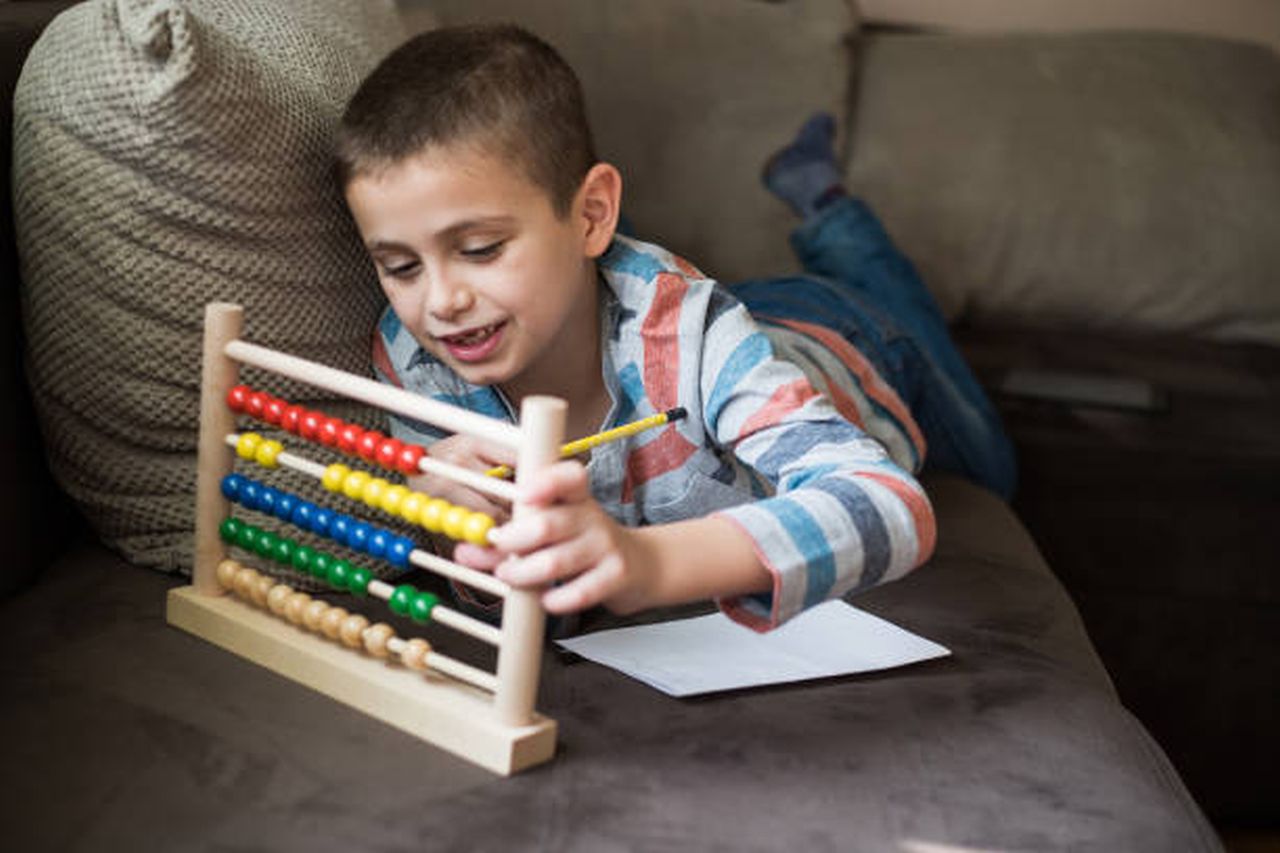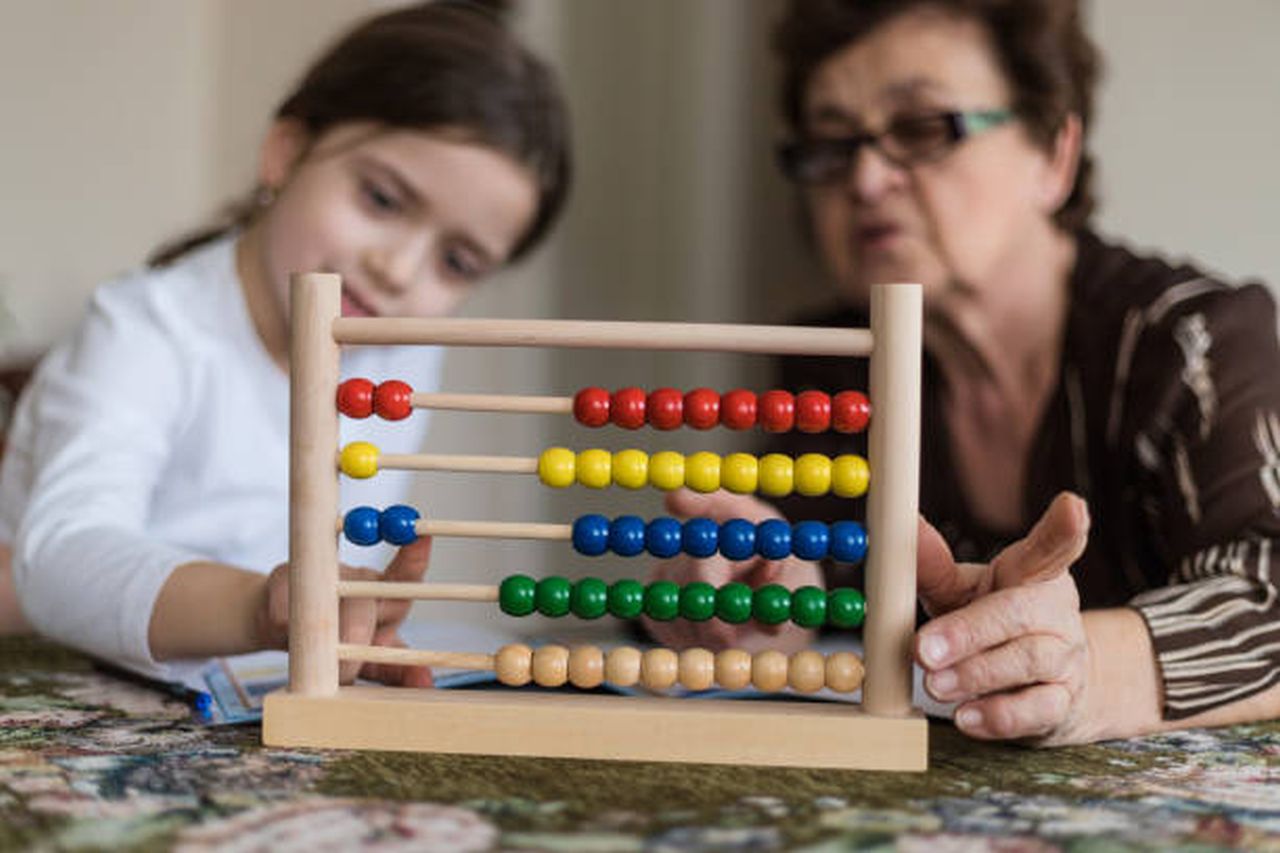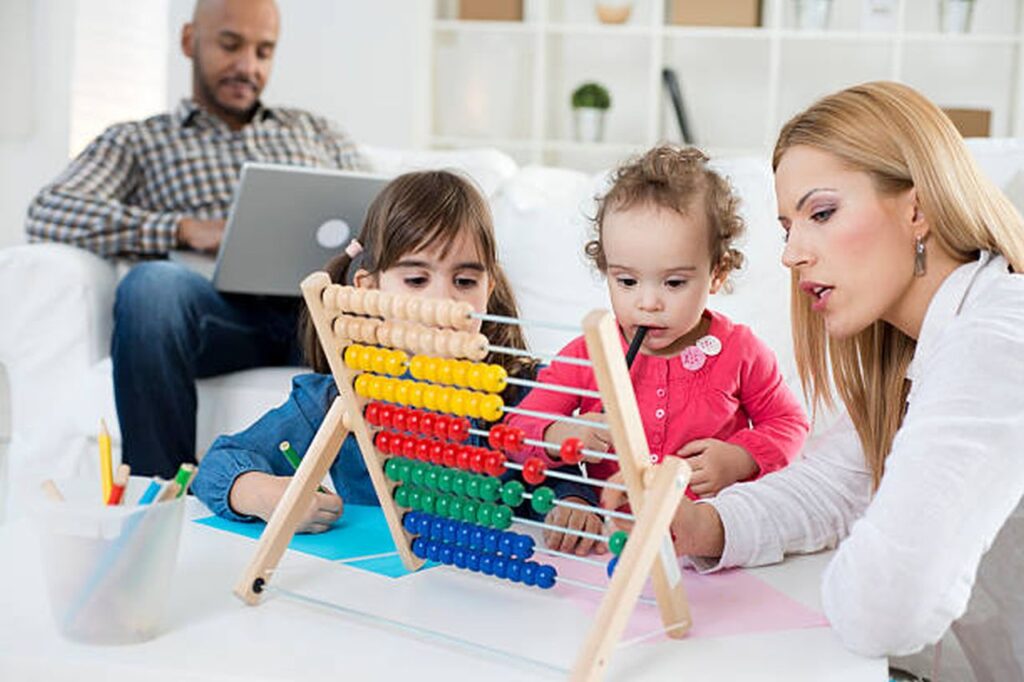You're probably wondering if and how you should introduce math to preschoolers. It's as simple as 1+1=2 to teach your kids math. Do more than just use a pen and paper to have math class enjoyable for everyone involved. Your youngster will have the cognitive capacity to make the connection between a number and its corresponding quantity beginning around the age of 2. For example, he understands that two is greater than one.
Children's early mathematical talents are put to use in all aspects of their lives. This is encouraging because having these abilities is crucial for academic success in school. However, playing with a calculator is not an appropriate setting for early mathematical development. Most kids already have an intuitive grasp of subtracting and adding long before they set foot in a classroom.
If we take cars as an example, Thomas owns two and Joseph wants one. When Thomas gives one away, he only has one automobile remaining. Counting the steps as you climb up or down the stairs is just one example of a common activity that can help expose your youngster to basic arithmetic. Children benefit much from these kinds of informal activities before beginning their formal math education at school.
What sort of arithmetic skills will your kid need to succeed in middle school? The first grade mathematics curriculum develops on the following foundational mathematical ideas and skills:
- Having a sense of proportion, shape, and pattern
- Competence in verbal counting
- Capable of Recognizing Numbers
- Recognizing changes in a quantity's magnitude
- Recognizing the importance of one-to-one relationships
- Before they start school, most children develop an understanding of addition and subtraction through everyday interactions.
Use these simple methods to help your children become math wizards. Looking for baby nursery chairs? Look no further. My Baby Nursery have an extensive list to choose from.
Knowledge of Math is Necessary for Success in School
In the same way that a well-constructed house requires a sturdy foundation, more complex mathematical knowledge is built upon the "foundation" of early learning. You can start laying the groundwork for your child's future success in mathematics during the toddler years by teaching concepts like:
Numeric Literacy
That's the skill to count correctly from the first to the last digit. A few years down the line, students will learn to reverse that process and count backwards. Ability to recognise patterns in numerical data, such as the sum and difference of two numbers, is a more advanced component of numeric competence.
Representation
By utilising language, visuals, symbols, and physical things, they bring abstract mathematical concepts to life (like blocks).
Spatial Awareness
At a later point in their education, students will learn to label this subject as "geometry." But for young children, it's a first introduction to abstract concepts like form, size, space, location, orientation, and motion.
Measurement
In technical terms, this involves determining the dimensions and mass of an item in terms of standard measurement systems. This expertise also includes the ability to count time
Estimation
The skill of making an accurate estimate of a quantity or measurement. Little ones have a hard time mastering this skill. More, less, more crucial, smaller, and less are all words you can use to aid them by demonstrating their meanings.
Patterns
Anything that repeats itself in a systematic fashion can be considered a pattern, whether it be a series of numbers, a shape, or an image. Predicting what will happen next, recognising logical relationships, and using reasoning are all talents that can be fostered through exposure to patterns.
Problem-Solving
Ability to reason one's way out of a jam and see that there are other solutions. It entails solving a problem by a combination of experience and rational thought.

Ways to Act
The following are some suggestions for capitalising on your child's innate curiosity and engaging in shared play as a means of teaching basic arithmetic concepts.
A good place to begin is with some counting
A child's familiarity with numbers is the first step in learning math. Counting is a fundamental skill, and you may teach it to them using the same methods you'll use to educate them in mathematics. You may help your child learn to count from one to 10 by counting objects with them or by simply repeating the numbers aloud. It's possible that one of your kids will respond well to a certain strategy while the other won't. Take an individual reading on each kid.
Counting is the first step in teaching your child the fundamentals of mathematics. Before you know it, they'll be performing basic arithmetic operations.
Incorporate Common Household Items
Everything necessary for you to begin instructing your youngster in mathematics already resides inside your possession. There are enough buttons, bits, money, books, fruit, tin cans, trees, cars, and more to count them all. When you consider everything that can be counted, added, subtracted, or multiplied, you will find that teaching math becomes a breeze.
You can also use common household items to show your child that mathematical differences are more significant than similarities. In the same way that counting apples is a fantastic mental exercise, counting apples, mangoes, and watermelons together is an even better mental workout. Instead of blindly counting from one to three, the youngster makes connections based on the objects around them.
Mathematical Games to Enjoy
A wide variety of games are available with the stated goal of making math instruction easier. Children can learn their way from one to one hundred with the help of the game Chutes & Ladders. What up, Cherry? Dice addition is a child's game since it leads to easy addition. Check local stores for the most up-to-date selection of popular advanced math board games. Games like Time . it helps, PayDay, Life, and Monopoly are great for teaching basic arithmetic skills.
You can use your imagination to create some of the most enjoyable mathematical games ever. Using blocks, you can start learning to count. Conduct a mathematical treasure hunt. Write math problems with chalk on the driveway in the form of numbers, and then have your children sprint to the right solution. Instead of viewing math as a chore, it may become something fun.
To round off your baby's nursery, peruse our selection of change table furnishings.
Produce Biscuits
Cookies with a soft centre can be used as a great learning aid. Having a fresh batch of cookies on hand is great for not only counting and basic math, but also for teaching fractions. Using a plastic knife, kids can practise slicing a cookie into quarters, half, and eighths. A child's mind is imprinted by the experience of seeing a fourth made and then cutting that whole into fourths.
Help your child learn to add and multiply fractions by using tiny bite-sized cookie pieces. Half a cookie, for instance, is equal to one half of a cookie plus one quarter of a cookie. Join the halves so they may appreciate the cookie's full glory.
Raw cookie dough can be used as a substitute for store-bought cookie dough in play dough recipes. Of course, once you've mastered fractions, you won't be able to eat them, but the crescent dough or modelling clay can be used again!
Invest in an Abacus
Even the tiniest of fingers enjoys working the abacus's wire and beads. Children can learn basic arithmetic operations with the use of an abacus. Using an abacus helps kids learn to think critically and solve problems. Be sure you understand the number set each colour bead represents before attempting to use an abacus.
Test Flash Cards
While flashcards can demonstrate that 2+2=4, first-hand experience with counting could be more beneficial for children. Try out both flashcards plus hands-on expertise to see which method your child prefers. Some kids do better with visual aids, such flash cards with answers or counting cards with graphics. Others won't really grasp math until they get to count real things. Swap up your child's mathematics to see what works best.
Including Math in Your Daily Routine
The use of mathematics in everyday life is encouraged. If you want your kid to get through math class, it's important to make use of what they learn in realistic ways.
- To what extent does the presence of blue automobiles at a stoplight belie the colour?
- If we only have $10, how many packs of crackers could i buy at the store?
- How many children will remain in the waiting area if three are taken into the exam room?
- If we each ate only a quarter of our dinner, how many would be left?
- If diapers were 25% discounted, how much would that make them?
- How much money does the licence plate ahead of us on the highway sum up to?
- Can you tell me how many clothes you plan to wash at once?
- How many cents would each of these four persons get if eight quarters had to be split among them?
Collect Your Forces And Make A Count
Young children can benefit much from beginning their mathematical education by learning to count. Fun finger and toe counting games include "one, two, clasp my shoe" and other rhymes that help kids remember the numbers 1-10.
Separate Things
Sorting objects into their respective categories is a great way to teach your kid about classification. If he has a lot of toys, you may have him sort them into categories and record how many of each kind there are.
Prepare the Meals
Make your child understand that math is useful in the real world. Practicing these skills with your toddler early on will help them in the long run.
Formed Name
In order for your child to succeed in mathematics, it is crucial that they learn to identify and name various shapes. Challenge your family and friends to a game of "Where Are the Squares and Where Are the Circles?" In addition, illustrate the possibility of constructing a square out of triangles.
Relationships in Space and Time
Learn about "near" and "far" and "under" and "over" with fun activities. If I say "near," you should move closer to me, and if I say "far," you should move away from me. To go beneath the table, you'll need to hop over the chair. Allow your child to experiment with volume and amount by filling and emptying cups with sand or water.

Size Comparison
An educational arithmetic game for infants based on the concept of size is as follows: Get your kid's stuffed animals together, and have him or her set them up from largest to smallest. Teach your youngster to stretch as far as he can and curl up to provide himself very little.
Model Instruction
Toddlers can learn a lot about patterns and math at the same time. Encourage your kid to make patterns with the blocks by arranging them in a logical way
Spell Out Math Terms
When employed in context, words and phrases that originally meant only to indicate size acquire nuanced meanings. Try to remember to use these phrases while you're out and about, at home, and even while playing games.
Refine Your Appearance.
Use the shape sorters as a toy. Cut out massive forms from multicoloured construction paper to use as templates. Count the sides and talk to your kid about the colours of the bodies as you show them. To encourage your youngster to "hop here on circle" or "jump upon that red shape," say these phrases to him or her.
Tote up and arrange
Assemble a collection of little playthings, shells, pebbles, or buttons. Engage your kid in some counting fun. Create piles of them based on attributes such as dimensions, hues, and functions
Make that Call Now!
Start teaching your little child, aged 3, the whereabouts and how to contact you at home by giving her the telephone number. Please explain to your kid that their home or apartment is but one in a long line of others, all of which have their own unique numbers.
Just how Big Is It?
Take note of the relative sizes of everything around you: Among purses, that pink one is undoubtedly the largest. Smallest of the bags is the blue one. The next time you talk to your kid about his size, ask him to consider how big various things are.
Wow, you've really got something going on here!
The act of filling, stirring, and pouring is simple enough for even the youngest of children to assist with. These experiences provide children with a natural introduction to mathematical concepts including counting, measuring, adding, and estimating.
Get Up and Go!
Observing their surroundings when out for a stroll provides kids with a wealth of material for developing their ability to classify, evaluate, compare, and contrast. Discussing and estimating sizes and distances, as well as practising counts, are all viable options.
It's Camera Time
Short tasks can be timed with the use of a stopwatch, timer, or hourglass. This is a great way to teach kids about time and how some activities take more or less time than others.
Refine Your Appearance
Describe the various forms and hues that are present throughout the day. A yellow triangle-shaped sign may catch your eye as you stroll by. Red rectangle-shaped signs are common inside shops.
Know Your Numbers and Sing About It
Sing tunes that are repetitive, rhyming, or numerical. Inculcating routines with music. They're also enjoyable methods of acquiring and refining linguistic competence and social competencies like cooperation.
Get Going Now
The time, the day this week, and the forecast can all be discussed in relation to a calendar. Calendars are a great tool for teaching and practising timekeeping, pattern recognition, and numerical skills. Asking your child, "What do people wear when everything is cold?" can help develop their ability to think logically about the world around them. Your kid will associate the cold with the need for a warm coat or sweater because of this.
Distribute It Equally
Get your kid to help you out by handing out snacks or setting the table with napkins. You should help him hand out crackers to the kids. The concept of one to one connection is aided in this way, which is especially helpful for young learners. One by you, one each for me, and one for Daddy. Emphasize the concept of numbers when handing out goods. Akin to "One, two, we're putting on our shoes."
Acquiring Knowledge Like Doing Laundry
Infuse some levity into your daily chores. To help you organise the laundry, have your kid make two piles: one for shirts and one for socks. You can tell how many shirts there are and how noticeable they are when they are worn together. Take out two socks and place them in their respective pile to see if he can successfully make pairs. Get his opinion on which financial institution he considers to be the most important.
How to Dress Well for Math
Have your kid pick out his or her own shirt for a day. Just enquire, "What colour is your shirt?" Definitely the colour yellow. Can you look around your room and see if you can discover anything else that's yellow? As your child approaches and passes the age of three, keep an eye out for repeating designs on his clothing. Your shirt has a pretty pattern on it. Some of the stripes alternate between red and blue. Or, Ponies, both small and large, are strewn across your clothing.
Puzzles & Games Involving Graphs
Make a scorecard where your kid may add a sticker every time it rains or every time it's sunny; this is especially fun for kids aged three and up. You and your coworkers can take a guess at whether column contains more often or fewer stars and then count them at the end of the week. Are you anxious about finding a change table for the baby's room? Here at My Baby Nursery, we have a wide selection of baby changer tables so you won't have to shop anywhere else.
Conclusion
Content Summary
FAQs About Teaching Toddler
Toddlers develop through play. Get illustrated play ideas to develop toddler talking and reading, including singing, word and naming games, and stories. Your toddler is starting to learn and understand many new concepts. Play ideas for toddler cognitive development include reading, sorting, puzzles and craft.
To teach these when questions, start with a few picture choices for your child. For example, you could have a picture representing nighttime and one representing daytime. Then, ask your child a question that either happens at night or during the day and have her point to and say the correct response.
According to a study, The Intelligence of Dogs, Poodles are the second smartest dog breed. In general, Poodles understand and learn a new command with fewer than five repetitions
In the toddler years, children don't always have words to express their wants, needs and emotions. They often use body language or other kinds of nonverbal communication, like crying, instead. For example, your child might: tug on your pants to be picked up
Their desire to explore new objects and people also is increasing. During this stage, toddlers will show greater independence; begin to show defiant behavior; recognize themselves in pictures or a mirror; and imitate the behavior of others, especially adults and older children.





